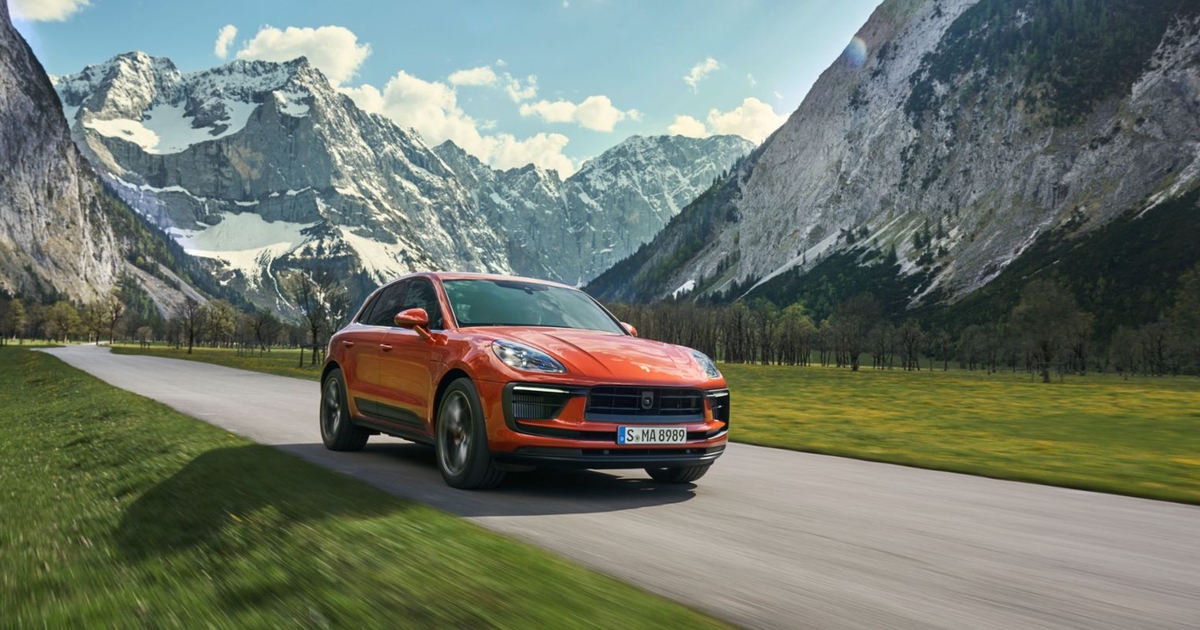Like every year, the government has tightened the scale of the ecological penalty. In 2024, the cost of several models will therefore soar, both because of the CO2 penalty, but also because of the weight.
The new scales of the ecological penalty for CO2 and weight
The ecological penalty, which aims to discourage the choice of a new polluting car, is broken down into two taxes. The first is based on vehicle CO2 emissions, and is now triggered from 118 g/km in the WLTP combined cycle. In 2023, its trigger threshold was set at 123 g/km. The maximum ceiling for the CO2 penalty is also more severe this year, since this tax can now reach up to €60,000, compared to €50,000 last year.
The Tax on mass in running order (TMOM), also called weight penalty, concerns many more models than in 2023. From now on, its trigger threshold has been reduced by 200 kg to reach 1600 kg. In addition, the scale is now progressive. Thus, a car exceeding 1600 kg will be taxed at an additional €10/kg up to 1799 kg, then €15/kg over the 1800 to 1899 kg bracket, etc.
While in 2023, the accumulation of the CO2 penalty and the weight penalty could not exceed €50,000 or 50% of the purchase price of the car, it is now uncapped.
A penalty that hardly spares any gasoline car
The first consequence of the new CO2 ecological penalty scale is that it now concerns a much larger number of models. In question, the lowering of its trigger threshold to 118 g of CO2 per kilometer hardly spares any thermal model without hybridization. Even small three-cylinder turbo engines are now largely affected by the penalty. 118 g of CO2/km are, for example, the emissions of a Renault Clio TCe 90, or even a little more depending on its configuration, since each model version has its own approval.
In 2024, even a petrol Dacia Sandero must pay an ecological penalty. © Dacia/Anthony Bernier
The penalty therefore affects all types of models. However, mini-city cars and multi-purpose city cars do not incur more than a few hundred euros in tax. In addition, a 48 V hybridization, as offered by the restyled Peugeot 208, can already be enough to fall below the threshold for triggering the penalty.
Mild hybridization (mHEV), however, does not allow larger vehicles to escape the penalty. For a compact SUV like a Peugeot 3008 or a Renault Austral, the lowest levels of hybridization are subject to a penalty of a few hundred euros. The only versions of the two models to completely escape it are the Renault Austral full hybrid (HEV) and the Peugeot 3008 Plug-in Hybrid (PHEV). The future 100% electric e-3008 (BEV) will be spared the penalty and will even benefit from the ecological bonus.
In addition, families with at least three dependent children, as well as host families, benefit from a reduction of 20 g of CO2/km or an administrative horse per child of 200 kg on the mass in order of walk per child. This reduction takes the form of a reimbursement up to a single vehicle with at least five seats, once every two years. It then allows the families concerned to benefit from a family vehicle, without having to invest in a hybrid or plug-in hybrid model to avoid the penalty.
Premium models in the spotlight
For the vast majority of cars sold, the penalty should therefore not reach new heights. There are, however, a few exceptions, starting with large thermal engines. Among general manufacturers, they are becoming increasingly rare and are often replaced by hybrid or plug-in hybrid versions. Among premium brands, on the other hand, large thermal engines still coexist with dual-motorized versions.
Only plug-in hybrid versions of a BMW 3 Series are not affected by the CO2 penalty. ©BMW
A BMW 3 Series, for example, whose range starts in gasoline with a 156 hp four-cylinder turbo in the 318i version (145 to 155 g of CO2/km in the sedan), requires at a minimum €1,504 penalty in a sedan, which is entirely acceptable on a vehicle costing more than €40,000. The diesel versions are taxed a little less thanks to lower CO2 emissions, but the only engines to completely avoid the penalty are the plug-in hybrid versions. However, we know that the latter are too often chosen for their advantageous taxation and that few customers take part in the recharge game.
If they are looking to benefit from a powerful engine without taking the risk of investing in a new diesel car, this is nevertheless the only viable solution. A 184 hp BMW 320i xDrive petrol thus brings between €2,726 and €6,126 penalty, which can make the 320e plug-in hybrid less expensive to purchase. Furthermore, although these electrified versions are heavier, plug-in hybrids are exempt from weight penalties, as are electric cars. However, there was talk of submitting them, but it will not be for 2024.
The removal of the penalty cap gives rise to records
However, we are still far from record penalties. They are to be found on the side of cars which combine a CO2 penalty and a weight penalty. For this second tax, the vehicles concerned are generally models from segment D and above, mainly from premium brands. Apart from Bugatti, the Renault Espace is the only French car concerned, and not on all its versions, with a weight penalty not exceeding €1,500. For large families, who constitute a significant part of Espace's customers, it is even possible to escape it.
With the exception of a few models like the Renault Espace, most of the cars affected by the weight penalty are premium brands.
It is therefore mainly high-end cars which are inflicted with this double penalty. A petrol Porsche Macan thus receives a €60,000 CO2 penalty, regardless of the version chosen, from its entry-level 265 hp, to which must be added at least a €3,920 weight penalty. The accumulation of the two taxes thus reaches €63,920 for a vehicle sold from €72,085. It is now the Taycan electric sedan, starting at €96,080, which is the cheapest Porsche in France – taking into account the penalty for the Macan and 718.
Most high-end models offer at least one plug-in hybrid version to avoid the penalty. Finally, the only cars that cannot be available in a trendy version are “accessible” sports cars.
They are already increasingly rare among the manufacturers' catalog and the few remaining models are now intended for an elite, not because of their list price, but rather because of their penalty. The Toyota GR86 with 235 hp (200 g of CO2/km), sold from €33,900, is thus taxed with the maximum CO2 penalty of €60,000, bringing its purchase cost to €93,900, not including the regional registration tax, of course. The sports car had to leave its manufacturer's catalog in Europe this year anyway for approval issues, more precisely driving aids which have become mandatory in the EU. But we wish Toyota France salespeople good luck in selling the few examples still available in stock.
The Toyota GR86 is an extreme case which shows the impact of removing the penalty cap. ©Toyota
For more high-end sports cars, certain manufacturers have decided to electrify them. The latest Mercedes C63 AMG is therefore equipped with a four-cylinder plug-in hybrid engine, replacing the V8s of previous generations. However, the majority of sports cars from Mercedes-AMG, BMW Motorsport and Audi Sport, for example, are still equipped with gasoline engines without hybridization, and often suffer the maximum CO2 penalty of €60,000, to be added to (at least) a few hundreds of euros in penalty per weight. It remains to be seen whether customers will be willing to trade six-cylinders and V8s for smaller electrified engines.

